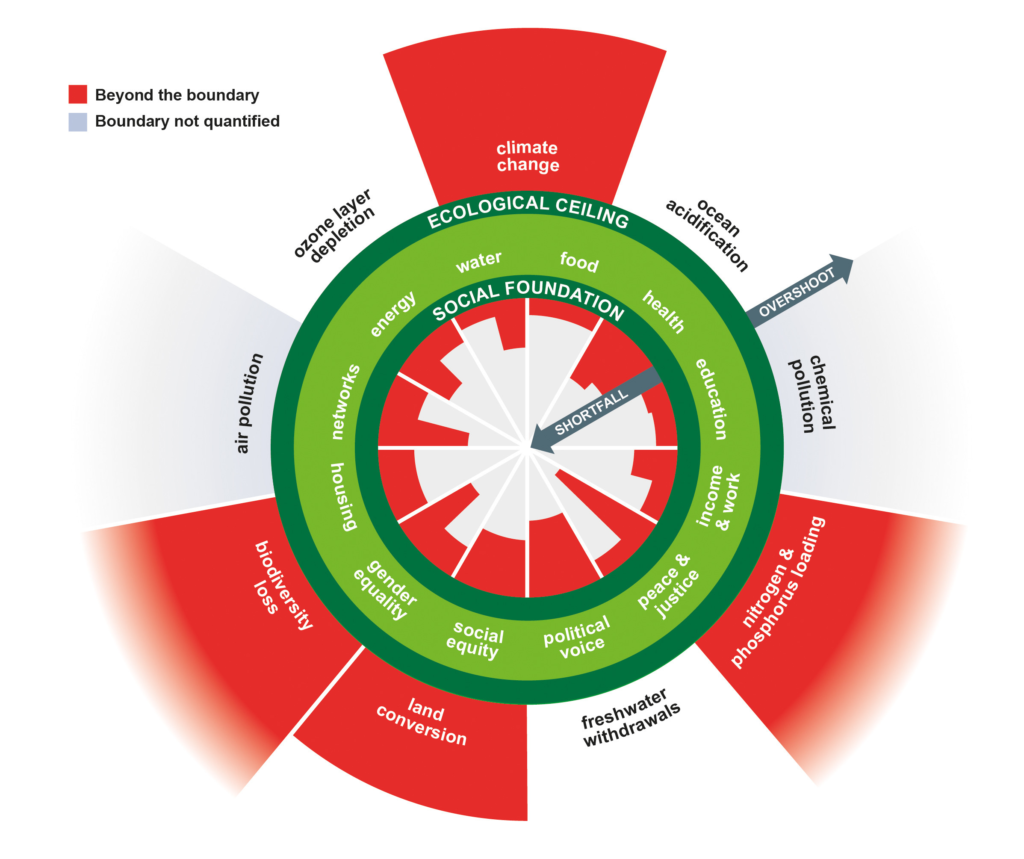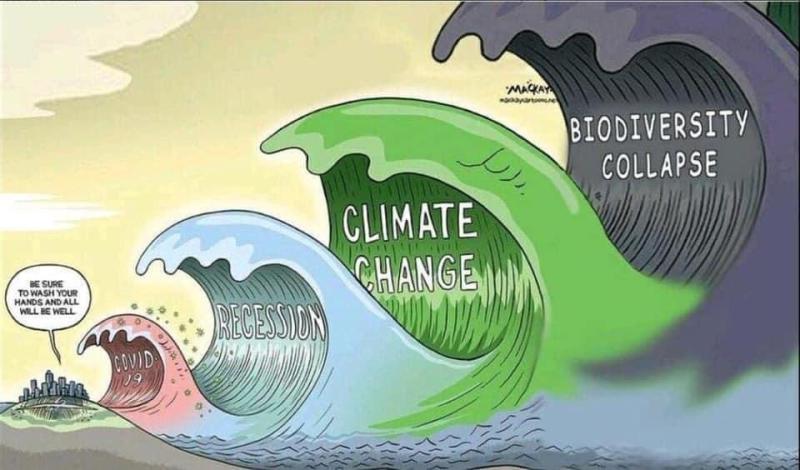
There are two approaches on how we can define of what is viable and desirable for our global economy. The difference between them is what we assume as a given on the one hand, and as variables that have to be adjust accordingly on the other, in order to produce an equilibrium.
In both of these approaches the following parameters are crucial:
- Non-Physical Parameters (qualitative parameters)
For example: technology, preferences, distribution of income, distribution of goods produced, lifestyle - Physical Parameters (quantitative parameters)
For example: quantities of goods produced, quantities of resources used
Interestingly, and unsurprisingly, the two approaches are exactly contrarian to one another:
Approach 1:
- Givens = Non-Physical Parameters
- Adjustables =
Physical Parameters
(typically in the form of increased output = growth of these parameters)
Approach 2:
- Givens = Physical Parameters
- Adjustables =
Non-Physical Parameters
(typically in the shape of increased quality of the non-physical parameters, in parallel to a quantitative reduction of output).
Economic theories: From old to knew to the luxury of ‘vintage’
For those that remember their economics intro lessons in high school (or university), they will notice that as of today, Approach 1, hence the one where the non-physical (qualitative) parameters are assumed as a given, is at the heart of how ‘growth’ and the ‘success of growth’ is defined in the global economy. This theory is also called ‘neo-liberal’ economics. Growth in this view is the untouchable holy cow.
Equally interestingly though, it is a world-view that only became mainstream with the onset of the industrial revolution.
What in the ‘old’ days was known as the steady state theory of economics (Approach 2), has evolved today into a significantly more sophisticated concept and framework: Doughnut Economics. In that thinking, as outlined above, planetary boundaries represent the physical boundaries that must be taken as a given, while the social variables are adjustable and form part of an ongoing optimisation process in order to attain the qualitatively best possible outcome for individuals and societies.

(Illustration under Creative Commons License 4.0 on Wikipedia)
Defining ‘Quality’

Defining ‘quantity’ is somewhat straight forward. And if simplified to the ultimate attribute, it implies a notion of growth equivalent to ‘more product through the door’. This again, more intuitively than anything else, implies increased quantitative use of and access to the material inputs needed to create that product (even if the product is in reality a service): at the very least energy, but more often than not also many other material inputs such as water, crop, extractives and so on.
Defining ‘quality’ or ‘qualitative’ is much harder, and directly links to abstract notions such as ‘quality of life’, ‘fair wages and income’, ‘livelihoods’, ‘opportunity’. It entails a notion of ‘enough’, or maybe more accurately: of ‘good enough’. A notion that implies sufficient availability of, and ease of access to, a variety of aspects for a life to be ‘comfortable enough’, while at the same time prohibiting the notion of wastefulness.
Maybe the culturally toughest aspect is the fact that ‘quality’ does imply an absolute absence of supremacy: of one person over another; of one country over another, of one society over another. And maybe most importantly: of one generation over another.
The Board Conundrum: Creating Value vs Ensuring Growth
As a board, the by far largest strategic challenge is:
- How can they lead a company towards ‘creating value’ while at the same time making a radical cut from value creation tied to the traditional growth paradigm?
- How can the aspect of ‘quality’ be improved while ‘quantity’ (and the variables that represent it) is either removed, or at least reduced very, very significantly?
Or in other words:
- What is the business model of an enterprise, its products and commercial acumen, if ‘more stuff’ is not the way any more?
- What is a way of doing business whereby ‘growth’ relates to the improvement in technology in ethics, rather than population and physical capital?
- And since quantification is always an issue: given zero material growth (i.e. the reality of a replacement economy), can we quantify the ‘growth’ in societal and planetary well-being an enterprise contributes to?
The Covid19 pandemic has shown how reliant the current global economy is on ever increasing material flows through the system to remain alive. If it had not been for government bail out packages of some type replacing those material flows … the economic havoc is unimaginable.

At the same time, it has become extremely clear that very little of the currently created economic benefit does truly result in tangible and lasting well-being that truly penetrates our global societies across all its layers and dimensions. The current growth benefits are extremely ephemeral for all but a very tiny slice of the global population.
For boards, and in order to ensure the survival of their business on the long run, there is no doubt an arduous path ahead. Demanding as their job is under ‘normal’ circumstances, stressful as it is under current pandemic circumstances – it is nothing compared to what is awaiting them: restructuring businesses that look successful on the surface, but that won’t be able to cope with a reality where fixed (and approaching zero) input material flows are the the name of the game.

